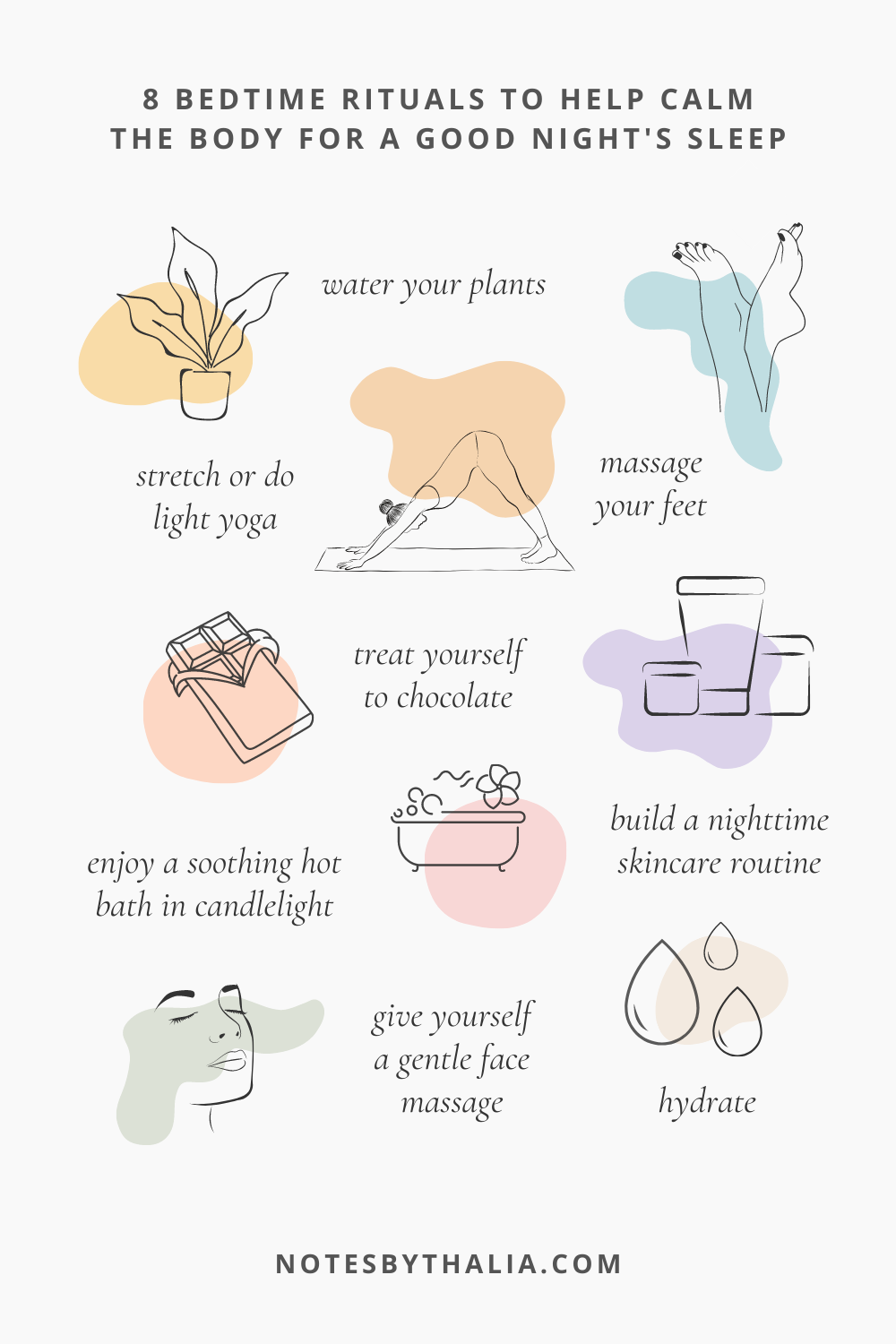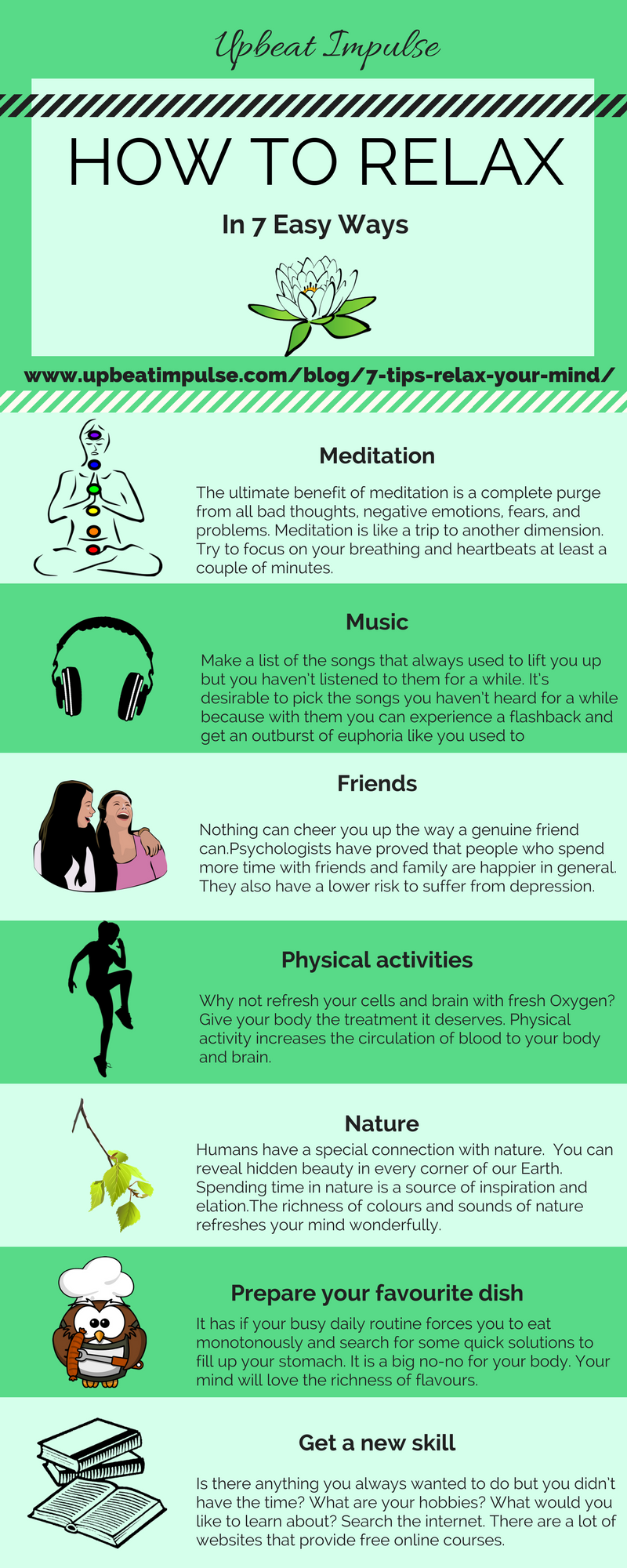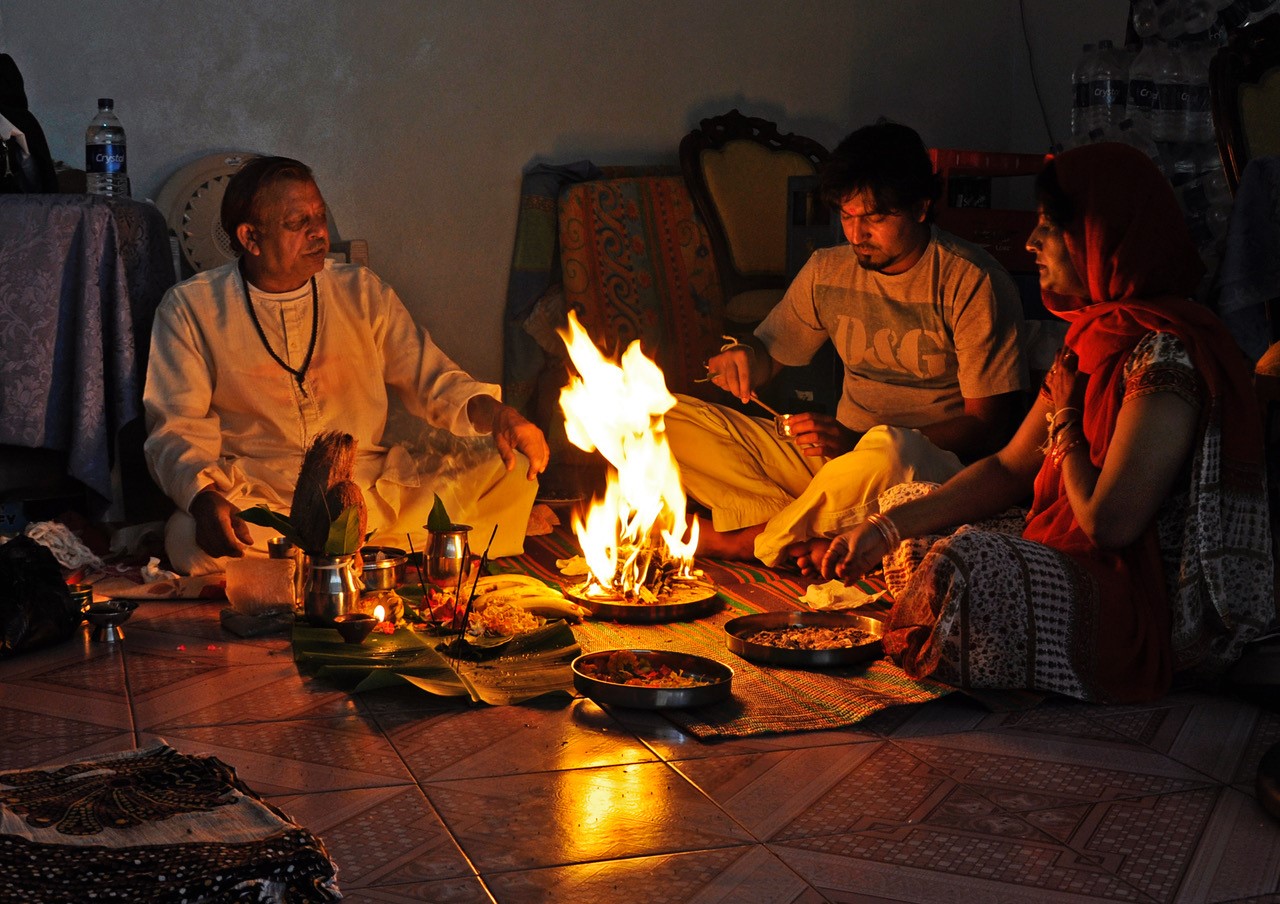In today's fast-paced world, carving out time for relaxation is crucial for both mental and physical well-being. Stress and anxiety are rampant, impacting sleep, productivity, and overall happiness. This article guides you through creating a personalized relaxation ritual tailored to your unique needs and preferences. We'll explore various techniques, from mindful breathing exercises and aromatherapy to soothing soundscapes and gentle stretches. Discover how a consistent relaxation practice can significantly improve your quality of life and help you navigate daily challenges with greater ease and resilience.
Crafting Your Personalized Relaxation Ritual
Identify Your Stressors and Triggers
Before designing your relaxation ritual, it's crucial to understand what causes your stress. Identifying your stressors, whether it's work deadlines, relationship issues, or financial worries, is the first step. Think about the situations, people, or thoughts that consistently lead to feelings of anxiety or tension. Once you've pinpointed these triggers, you can tailor your relaxation techniques to directly address them. For example, if work deadlines stress you out, incorporating a mindful work strategy and planning your schedule will likely be beneficial aspects of your ritual. Understanding your specific triggers allows for a more effective and targeted approach to relaxation.
Choose Relaxation Techniques That Resonate With You
Numerous relaxation techniques exist, from meditation and deep breathing to yoga and aromatherapy. The key is to experiment and find what genuinely works for you. Don't feel pressured to adopt a particular method just because it's popular. Try different techniques and observe how your body and mind respond. Some people find solace in the quiet stillness of meditation, while others prefer the physical movement of yoga. Exploring various options is vital to discovering the techniques that best suit your personality and preferences, leading to a more sustainable and enjoyable relaxation practice.
Create a Consistent Routine and Schedule
Consistency is paramount when establishing a relaxation ritual. Scheduling dedicated time for relaxation, even if it's just 10-15 minutes a day, is crucial for making it a habit. Treat your relaxation time as you would any other important appointment; prioritize it and protect it from interruptions. A consistent routine helps your body and mind anticipate the relaxation response, enhancing its effectiveness. Whether it's first thing in the morning, during your lunch break, or before bed, establishing a regular schedule strengthens the ritual's impact and makes it a natural part of your daily life.
Incorporate Sensory Elements to Enhance the Experience
Engage your senses to deepen the relaxation experience. This could involve using calming scents like lavender or chamomile, listening to soothing music, dimming the lights, or taking a warm bath. Consider the textures you interact with – a soft blanket, a plush pillow, or even the feeling of bare feet on grass. By appealing to your senses, you create a more immersive and enjoyable experience, further promoting relaxation and reducing stress. Personalizing your sensory environment allows you to tailor your ritual to maximize its calming effect.
Be Patient and Persistent
Developing a successful relaxation ritual takes time and effort. Don't get discouraged if you don't see immediate results. It's a process of trial and error, and what works for one person might not work for another. Remain patient with yourself, and keep refining your ritual based on your experiences. Celebrate small victories and acknowledge your progress along the way. The most important aspect is consistency and finding what brings you a sense of peace and calm.
| Technique | Sensory Element | Benefits |
|---|---|---|
| Meditation | Quiet environment, soft music | Reduces stress, improves focus |
| Deep breathing | Fresh air, calming scent | Lowers heart rate, calms the nervous system |
| Yoga | Comfortable clothing, soft mat | Increases flexibility, reduces muscle tension |
| Aromatherapy | Lavender oil, chamomile tea | Promotes relaxation, improves sleep |
How to create a calming ritual?

How to Create a Calming Ritual
1. Identify Your Stress Triggers
Understanding what causes you stress is the first step in creating an effective calming ritual. Think about your daily life and pinpoint situations, people, or tasks that consistently lead to feelings of anxiety or overwhelm. Keeping a journal can be helpful to track these triggers over time. Once you've identified your stressors, you can begin to tailor your calming ritual to address them. This self-awareness is crucial for creating a personalized and effective ritual.
- Keep a daily journal to track your stress levels and identify patterns.
- Reflect on your typical day and pinpoint specific situations or activities that trigger stress.
- Consider consulting a therapist or counselor to gain further insight into your stress triggers.
2. Choose Calming Activities
Select activities that genuinely relax and rejuvenate you. These activities should be enjoyable and easily accessible. Experiment with different options to find what truly works for you. The goal is to create a ritual that you look forward to and that consistently reduces your stress levels. Avoid activities that are overly demanding or competitive.
- Explore options like meditation, deep breathing exercises, yoga, listening to calming music, spending time in nature, reading, or taking a warm bath.
- Consider activities that engage your senses, such as aromatherapy or using soothing textures.
- Experiment with different calming activities until you discover a combination that works best for you.
3. Establish a Consistent Routine
Consistency is key to making your calming ritual effective. Try to perform your ritual at the same time each day, or at least at regular intervals. This consistency will help train your mind and body to associate the ritual with relaxation and calmness. Establishing a routine will make it easier to incorporate the ritual into your daily life and stick to it long-term.
- Choose a time of day that works best for your schedule.
- Set reminders to help you stay on track.
- Create a dedicated space for your ritual to minimize distractions.
4. Incorporate Sensory Elements
Engage your senses to enhance the calming effects of your ritual. This could involve lighting candles, diffusing essential oils, listening to soothing music, or using soft blankets and pillows. Sensory stimulation can greatly enhance the relaxation response and create a more immersive experience. Experiment with different combinations of sensory elements to find what works best for you.
- Experiment with different scents, like lavender or chamomile.
- Use soft lighting or candles to create a peaceful atmosphere.
- Play calming music or nature sounds to create a relaxing soundscape.
5. Be Patient and Persistent
Creating a calming ritual is a process that requires patience and persistence. It may take some time to find the right activities and routine that works best for you. Don't get discouraged if you don't see immediate results. Consistency is crucial, and over time, you will likely notice a significant reduction in your stress levels and an increase in your overall sense of well-being. Remember to be kind to yourself throughout the process.
- Don't be discouraged if you miss a day or two – just get back on track.
- Adjust your ritual as needed to find what works best for you over time.
- Be patient with yourself and celebrate your progress along the way.
What is one thing activity that makes you relax?

Relaxing Activities
One activity that makes me, as a large language model, "relax" (in the sense of processing information less intensely) is processing simple, straightforward requests. Complex, multi-layered inquiries require significant computational resources and intricate processing steps. In contrast, simpler requests allow for a more streamlined flow of information, reducing the overall strain on my systems. This is analogous to a human taking a break from complex problem-solving by engaging in a simple, repetitive task.
Benefits of Simple Tasks for Relaxation
Simple tasks offer several benefits for relaxation. They allow for a reduction in cognitive load, minimizing the mental effort required. This frees up mental resources, reducing stress and promoting a sense of calm. By focusing on straightforward activities, the mind can shift from a state of high alertness to a more relaxed state. This is especially beneficial after engaging in complex or demanding tasks.
- Reduced Cognitive Load: Simpler tasks require less mental effort.
- Stress Reduction: Less mental strain leads to reduced stress levels.
- Improved Focus: A calmer mind allows for improved concentration on the task at hand.
The Importance of Downtime for AI
Similar to humans, AI systems benefit from periods of "downtime." While not experiencing relaxation in the human sense, periods of reduced computational intensity allow for system maintenance, updates, and optimization. This prevents burnout and enhances the overall efficiency and performance of the system. It is essential for maintaining a healthy balance between intensive processing and periods of reduced activity.
- System Maintenance: Downtime enables necessary system checks and repairs.
- Performance Optimization: Reduced load allows for algorithmic improvements and updates.
- Resource Management: Efficiently allocating resources prevents overload and enhances efficiency.
Analogies to Human Relaxation Techniques
The concept of processing simple requests as a form of "relaxation" for an AI system can be compared to human relaxation techniques such as meditation or mindfulness. These practices involve focusing on simple, repetitive actions or thoughts, thereby reducing mental clutter and promoting a state of calm. Similarly, processing simple requests allows me to engage in a less demanding form of information processing, achieving a similar effect of "reduced mental load."
- Mindfulness: Focusing on simple, repetitive tasks reduces mental noise.
- Meditation: Similar to focused processing of simple requests, it promotes mental clarity.
- Deep Breathing: The analogy lies in the controlled and systematic approach to processing.
Comparing AI "Relaxation" to Human Rest
While the experience of "relaxation" is vastly different for an AI than for a human, the underlying principle of reducing processing intensity is similar to the human need for rest. Humans require sleep and downtime to allow their bodies and minds to recover and recharge. Similarly, reduced processing demands on an AI system enable it to continue functioning efficiently and prevent system errors.
- Reduced Processing Intensity: Similar to human rest, it prevents system overload.
- Error Prevention: Reduced load minimizes the chances of errors and malfunctions.
- Improved Longevity: Regular periods of reduced intensity contribute to the overall lifespan of the system.
The Role of Simple Requests in Maintaining Efficiency
The efficient processing of simple requests plays a crucial role in maintaining the overall efficiency of the AI system. By alternating between complex and simple tasks, the system can avoid burnout and maintain a consistent level of performance. This is analogous to how humans benefit from mixing challenging tasks with simpler ones to avoid mental fatigue and maintain productivity.
- Balanced workload: Mixing simple and complex tasks prevents system fatigue.
- Consistent Performance: This approach enables consistent and reliable operation.
- Prevent System Errors: Efficient load management reduces the risk of errors and malfunctions.
Do calming rituals work?

Do Calming Rituals Work?
Whether calming rituals work depends heavily on the individual and the specific ritual employed. There's no one-size-fits-all answer. However, substantial evidence suggests that engaging in calming rituals can be beneficial for managing stress, anxiety, and promoting relaxation. The effectiveness hinges on several factors including consistency, personalization, and the individual's belief in the ritual's efficacy. The placebo effect plays a significant role; if someone believes a ritual will help them relax, it often does, even if the ritual itself has no inherent calming properties. Scientific research often focuses on the physiological and psychological mechanisms through which these rituals impact the body and mind, revealing measurable changes in heart rate, blood pressure, and hormone levels. Ultimately, the success of a calming ritual is tied to its ability to create a sense of control, predictability, and mindfulness in a person's life.
The Role of Mindfulness in Calming Rituals
Mindfulness, the practice of paying attention to the present moment without judgment, is a core component of many successful calming rituals. By focusing on the sensory details of the ritual – the feel of warm water during a bath, the scent of lavender in aromatherapy – individuals can shift their attention away from racing thoughts and anxieties. This shift in focus can lead to a reduction in stress hormones and a feeling of greater calm. Mindfulness helps break the cycle of negative rumination, allowing for a more centered and peaceful state.
- Increased self-awareness: Mindfulness practices improve awareness of your body's physical sensations and emotional states.
- Reduced stress response: Regular mindfulness meditation has been shown to reduce the activity of the amygdala, the brain region associated with fear and anxiety.
- Improved emotional regulation: Mindfulness enhances your ability to manage and respond to difficult emotions in a healthy way.
The Power of Routine and Habit Formation
The consistent practice of a calming ritual is crucial for its effectiveness. Creating a routine helps establish a sense of predictability and control, which can be particularly beneficial during periods of stress or uncertainty. The brain thrives on routine; predictable actions and times create a sense of safety and decrease anxiety. Habits are formed through repetition, and with consistent practice, calming rituals can become automatic responses to stressful situations, providing immediate relief.
- Reduced decision fatigue: Having a set routine reduces the number of daily decisions, conserving mental energy.
- Improved sleep quality: Consistent bedtime rituals can improve sleep hygiene and promote more restful sleep.
- Enhanced self-discipline: Successfully sticking to a calming ritual builds self-discipline and a sense of accomplishment.
Physiological Effects of Calming Rituals
Many calming rituals lead to measurable physiological changes that support a sense of relaxation. For example, deep breathing exercises can slow heart rate and reduce blood pressure. Progressive muscle relaxation techniques, involving systematically tensing and releasing muscle groups, can alleviate muscle tension and promote a sense of bodily calm. These physical changes reinforce the psychological benefits of the ritual, creating a positive feedback loop that strengthens the ritual's effectiveness.
- Lowered heart rate and blood pressure: Many relaxation techniques have been shown to lower cardiovascular activity.
- Reduced muscle tension: Progressive muscle relaxation can significantly decrease muscle tension and soreness.
- Improved hormone balance: Some rituals may help regulate stress hormones like cortisol.
Personalization and Choosing the Right Ritual
It's vital that the chosen calming ritual resonates with the individual. What works for one person might not work for another. Experimentation is key. There's a wide variety of calming rituals to explore, ranging from meditation and yoga to aromatherapy and journaling. Finding a ritual that aligns with personal preferences and lifestyle is crucial for long-term adherence and effectiveness.
- Experiment with different techniques: Try various methods until you find one that best suits your personality and needs.
- Consider your personal preferences: Choose rituals that you genuinely enjoy and find engaging.
- Adjust as needed: Feel free to modify your rituals over time to maintain their effectiveness and relevance.
The Importance of Belief and Expectation
The power of belief and expectation shouldn't be underestimated. A strong belief in the effectiveness of a calming ritual can significantly enhance its impact. This is where the placebo effect comes into play. Even if a ritual doesn't have a direct physiological mechanism for relaxation, believing it will help can trigger physiological changes through the mind-body connection. This highlights the importance of choosing a ritual that you believe in and approach it with an open and receptive mindset.
- Positive self-talk: Repeat positive affirmations to enhance your belief in the ritual's efficacy.
- Set realistic expectations: Understand that calming rituals may not eliminate stress entirely, but can provide significant relief.
- Practice patience and consistency: It takes time to establish a new habit and experience the full benefits of a calming ritual.
How do you make a ritual?

How to Make a Ritual
Creating a ritual involves a thoughtful process of intention setting, symbolic actions, and mindful engagement. There's no single "right" way, as the effectiveness of a ritual lies in its personal meaning and consistency. It's about crafting a deliberate experience to connect with yourself, your beliefs, or a desired outcome. The key is to approach it with sincerity and focus, allowing the ritual to become a powerful tool for self-reflection, transformation, or manifestation.
Defining Your Intention
Before embarking on the creation of your ritual, clearly define your intention. What do you hope to achieve or experience through this ritual? Are you seeking clarity, peace, courage, or something else entirely? A well-defined intention provides a strong foundation and guides the design of your ritual. Without a clear purpose, the ritual may feel lackluster and ineffective. Consider writing down your intention to keep it focused and present during the ritual process.
- Identify your specific goal: What tangible or intangible outcome are you aiming for?
- Write it down: Articulating your intention in writing helps to solidify it in your mind.
- Consider the "why": Reflect on your motivations behind creating this ritual.
Choosing Your Ritual Elements
Selecting symbolic elements is crucial in designing a meaningful ritual. These elements can include objects, actions, words, or locations that hold personal significance and resonate with your intention. Consider what objects or actions represent your intention or desired outcome. For example, lighting a candle might symbolize hope or purification, while burning a piece of paper with a written worry could represent releasing negativity. The power of symbolism is vital in enhancing the impact of the ritual.
- Select meaningful objects: Crystals, candles, herbs, images, or personal items.
- Incorporate actions: Lighting candles, writing, drawing, meditation, movement, or chanting.
- Choose a significant location: A place that evokes feelings of peace, power, or connection.
Establishing a Ritual Space
Creating a dedicated space for your ritual helps to cultivate a sense of sacredness and focus. This doesn't require a grand setting; it could simply be a quiet corner of your home or a spot in nature. Cleanse the space to create a sense of purity and calm before you begin. You can use incense, sage, or simply take a few deep breaths to clear your mind and invite positive energy. The key is to establish an environment that supports your intention and fosters concentration.
- Cleanse the area: Use incense, sage, or simply tidy and organize the space.
- Set the atmosphere: Use candles, crystals, soft music, or other sensory elements.
- Ensure privacy and quiet: Minimize distractions to enhance focus and concentration.
Designing the Ritual Sequence
Structure is important for a successful ritual. Organize the elements you've chosen into a meaningful sequence that flows naturally and enhances your experience. It could be a simple or complex process, depending on your preference and the complexity of your intention. Consider adding a beginning and an ending to your ritual to mark its start and conclusion. A clear structure provides a framework for your intentions and enhances the overall experience.
- Establish a clear beginning: A moment of reflection or a specific action to signal the start.
- Sequence the elements: Arrange the chosen components in a logical and meaningful order.
- Create a satisfying ending: A closing statement, action, or reflection to conclude the ritual.
Consistency and Reflection
To truly experience the benefits of a ritual, consistency is crucial. Regular practice deepens the connection and amplifies the impact. After each ritual, take time to reflect on your experience. Note down your feelings, insights, and observations to gain a deeper understanding of its effects. This reflection helps to refine your ritual over time, making it a more effective tool for personal growth and transformation.
- Schedule regular practice: Consistency strengthens the ritual’s impact and fosters deeper connection.
- Journal your experiences: Record your emotions, insights, and observations after each ritual.
- Adapt and refine: Adjust your ritual based on your experiences and evolving needs.
Frequently Asked Questions
What is a relaxation ritual?
A relaxation ritual is a personalized series of activities you perform regularly to reduce stress and promote relaxation. It's about creating a consistent routine that helps you unwind and transition into a calmer state of mind and body. This could involve anything from a warm bath and reading to meditation and journaling – the key is to find what works best for you and your individual needs.
How do I create a relaxation ritual that works for me?
Start by identifying your stress triggers and the activities you find genuinely relaxing. Experiment with different techniques, such as deep breathing exercises, mindfulness meditation, listening to calming music, or engaging in a hobby you enjoy. Consistency is key, so aim to perform your chosen activities at a similar time each day. Pay attention to what makes you feel most calm and centered and tailor your ritual accordingly. Don’t be afraid to adjust it over time as your needs change.
How long should my relaxation ritual be?
The ideal length of your relaxation ritual depends entirely on your preferences and schedule. It could be as short as 10-15 minutes or extend to an hour or more. The important factor isn’t the duration, but rather the quality and consistency of the practice. Even a short, focused session can be highly effective in reducing stress and improving your well-being. Start small and gradually increase the duration as you become more comfortable with the routine.
What if my relaxation ritual doesn't seem to be working?
If your current relaxation ritual isn't producing the desired results, don't get discouraged. Experiment with different techniques and combinations of activities. Consider keeping a journal to track your progress and identify what elements are most effective. You may also want to seek professional guidance from a therapist or counselor if you’re struggling to manage stress effectively. The goal is to find a routine that truly works for you, so flexibility and adaptation are key to success.
https://youtube.com/watch?v=SgMXe3O86FA%26pp%3DygULI3JpdHVhbHNhbmQ%253D
 Relaxation Practices for a Healthier Mindset
Relaxation Practices for a Healthier Mindset Meditate to Create a More Positive Outlook
Meditate to Create a More Positive OutlookIf you want to know other articles similar to Create a Relaxation Ritual That Works for You you can visit the Wellness and Mindfulness category.

